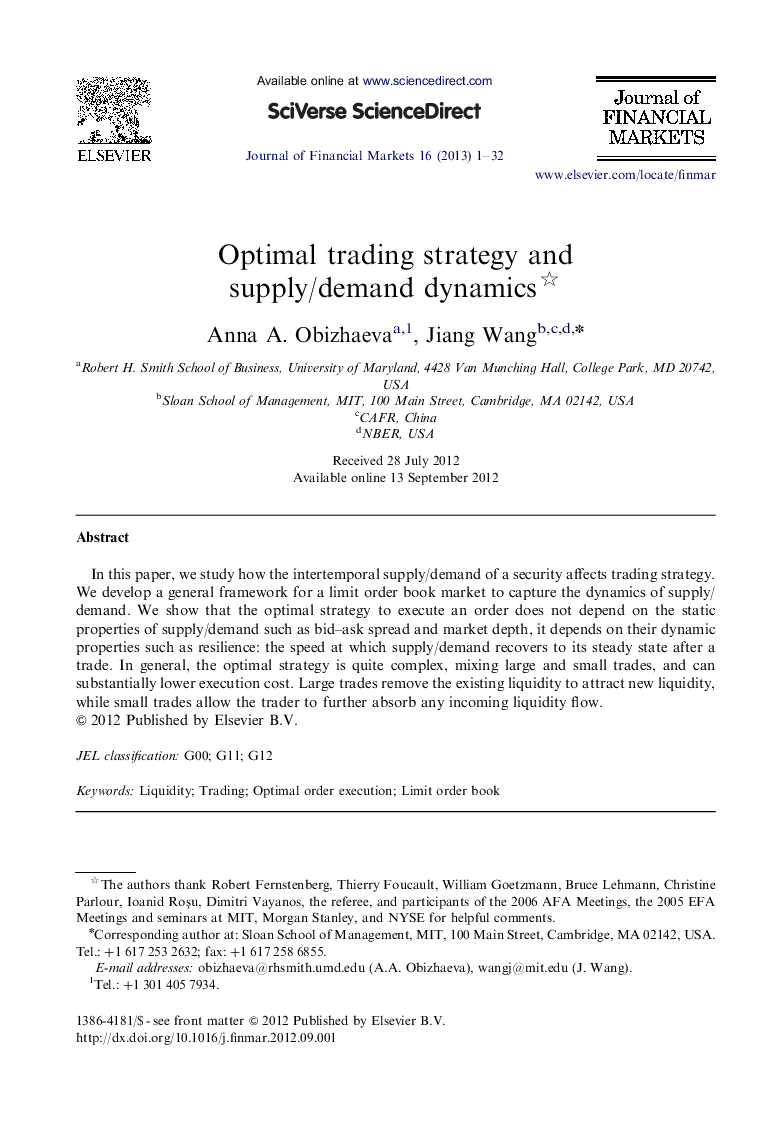| Article ID | Journal | Published Year | Pages | File Type |
|---|---|---|---|---|
| 961401 | Journal of Financial Markets | 2013 | 32 Pages |
Abstract
In this paper, we study how the intertemporal supply/demand of a security affects trading strategy. We develop a general framework for a limit order book market to capture the dynamics of supply/demand. We show that the optimal strategy to execute an order does not depend on the static properties of supply/demand such as bid-ask spread and market depth, it depends on their dynamic properties such as resilience: the speed at which supply/demand recovers to its steady state after a trade. In general, the optimal strategy is quite complex, mixing large and small trades, and can substantially lower execution cost. Large trades remove the existing liquidity to attract new liquidity, while small trades allow the trader to further absorb any incoming liquidity flow.
Related Topics
Social Sciences and Humanities
Economics, Econometrics and Finance
Economics and Econometrics
Authors
Anna A. Obizhaeva, Jiang Wang,
